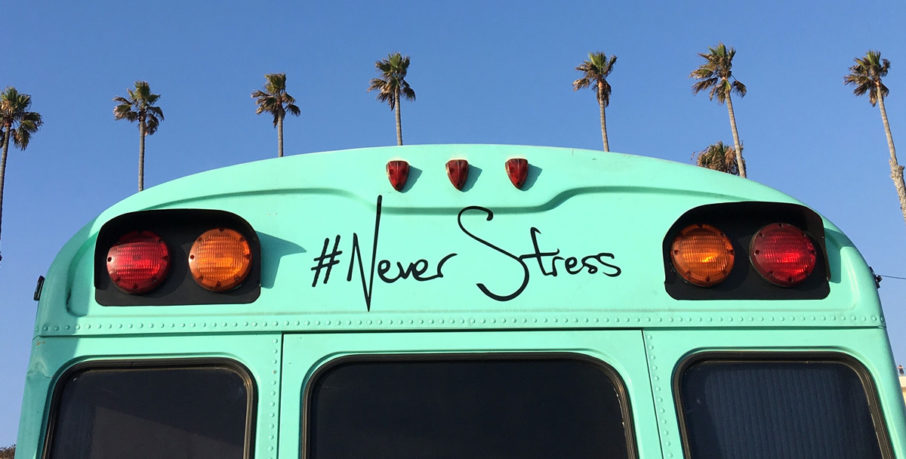by Austin Dannhaus
A couple of years ago, I wrote an article in which I argued for a systems approach to improving learning outcomes. My thesis at the time was that innovative educational technology was being put into broken systems that weren’t able to put the technology to its best use, the proverbial new wine in old wineskins. I believed then—and still do—that technological innovation will continue to afford only incremental change until we rethink the aims of the modern education ecosystem and the resources, structures, and processes that create the backdrop for teaching and learning.
Despite the continued work of dedicated and passionate education innovators, we appear to still be stuck.1 The biannual ritual of lamenting the pace of change in our public schools happened on cue earlier this year with the release of the most recent NAEP2 scores. According to one article, the numbers from the national math and reading assessment were evidence of another “decade of stalled educational progress.”
Looking Inward
So what should we do to bring about the change in education we all hope for? What will renew our current systems and give new tools and approaches fertile ground to maximize our efforts? How can we get comfortable with untraditional ways of thinking about the value of education?
My hunch is that we need to look inward.
At Free Range, we recently had the opportunity to work with Mindful Schools, an organization working to equip educators and students with the tools to apply mindfulness practices in their lives and classrooms. We were amazed to hear the testimonials about the impact the practice was having in schools. At SXSWedu, there were a number of panels on the topic. But in talking with educators around the country about efforts to bring mindfulness into schools, we realized that mindfulness programs were sometimes viewed skeptically as “just another initiative” being forced on initiative-fatigued educators. For many, it felt like one more thing to fit in. One teacher we spoke to said, “When am I going to find 20 minutes to meditate given everything I have to do?”
We left these conversations at once excited about the promise of mindfulness to transform schools but concerned about the emotional reality facing educators. They continue to be overburdened and under-resourced, needed but distrusted, the “key to our kids’ success” yet not doing enough. We realized that more than anything, the way forward might begin by hitting the emotional reset button—turning inward instead of looking for more outside solutions.
The trend towards focusing inward has been underway for a while now. Soft skills have long been a focus alongside the core curriculum and more recently social-emotional learning has emerged as the latest pillar of a well-rounded 21st century education. Evidence about the importance of grit and persistence have caused us to rethink the role of hard-to-quantify competencies. Moreover, our understanding of how trauma impacts health and learning outcomes has opened up exciting possibilities for how we address pernicious achievement gaps.
Rethinking Emotional Systems
These are all important on an individual level, but what about the systems level? How do we start to think about the role emotional systems play in either furthering or inhibiting our goals? Corporations have known about the power of culture for driving organizational success. And so as we think about how to continue the work of renewing our schools, here are 6 areas of school culture that represent interesting starting points for educators:
- Motivation—Education has relied heavily on extrinsic motivation since its inception: grades, awards, test scores, acceptance letters, and so on. As the evidence has mounted about the benefits of intrinsic motivation, schools have looked at ways to balance the two. How can we continue to motivate students to achieve through the power of their own interests, and how can our school systems enable this approach?
- Independence—The recent focus on personalized learning has led educators to explore ways to let kids guide their own learning. Of course, the logistical demands of managing large learning environments also requires tight coordination. Students’ activities are often overly organized, with the teacher acting as conductor for the whole class instead of coach to individual students. How do we combine intrinsic motivation with systems of support to enable student-led learning?
- Compassion—A lot of great, inspiring teaching and learning happens in our schools—but not all of the time. Teachers and students get frustrated with one another. Principals and teachers feel like they are on different pages. Parents wonder if their voices are heard. Everyone is exasperated with bureaucrats that string up red tape. What if we chose to rewire our system on the basis of trust and patience with the understanding that we’re going to make plenty of mistakes along the way?
- Integration—Much of learning is siloed. We compartmentalize our thinking, while the world around us is evolving and dynamic. Students must learn to make increasingly complex connections between subjects and apply that knowledge in a skills-focused workforce. What if we designed our systems so that learning experiences and demonstrations of knowledge offered a more integrated picture of what students were capable of?
- Attention – There seems to be little time for deep work in schools. With frequent class changes, loads of busy work, and more and more tools and methods entering our classrooms, there is a lot to divide the minds of learners. What’s needed is a change of pace, a trust that we can sometimes do more by doing less. What if we chose to trust in the power of sustained effort over the easy-to-read evidence of less significant tasks?
- Collaboration – The tension between competition and collaboration is longstanding. We want to teach kids to work hard and strive for big goals—to achieve. But there are plenty of signs that our culture of achievement has its limits and that collaboration will be the thing that leads to breakthrough advances in society. How might we structure school systems so they lead to natural, generative collaboration?
Taken on their own, these concepts offer little by way of new thinking. But together—and with a systemic focus on reforming the types of learning environments we’re creating—I believe they can usher in a new era for school renewal. They can create the emotional systems that allow new school models, better technology, and updated pedagogical frameworks to leave their intended mark on students.
1 It’s important to acknowledge that educational progress is a complex thing - and my cursory analysis here of technology and systems is only one mental model for analyzing the challenges and opportunities faced by learning institutions.
2 The NAEP is only one measure (and not a good one, in my view) of the merit of our educational system; to recast the words of RFK, it measures “everything, in short, except that which makes [education] worthwhile.” We ought not belittle the many promising efforts of education innovators of all stripes who are making progress, even if our best measures aren’t yet able to reflect the changes they are making.




